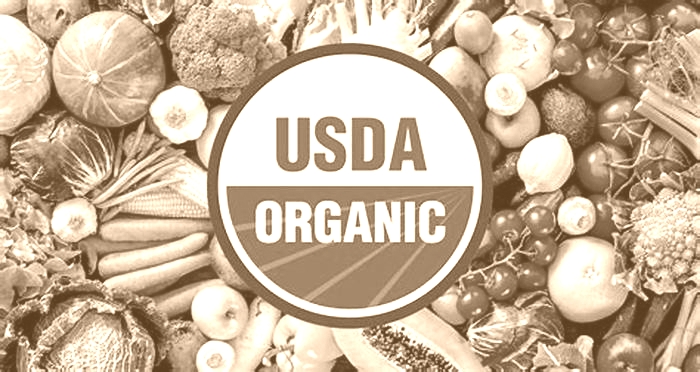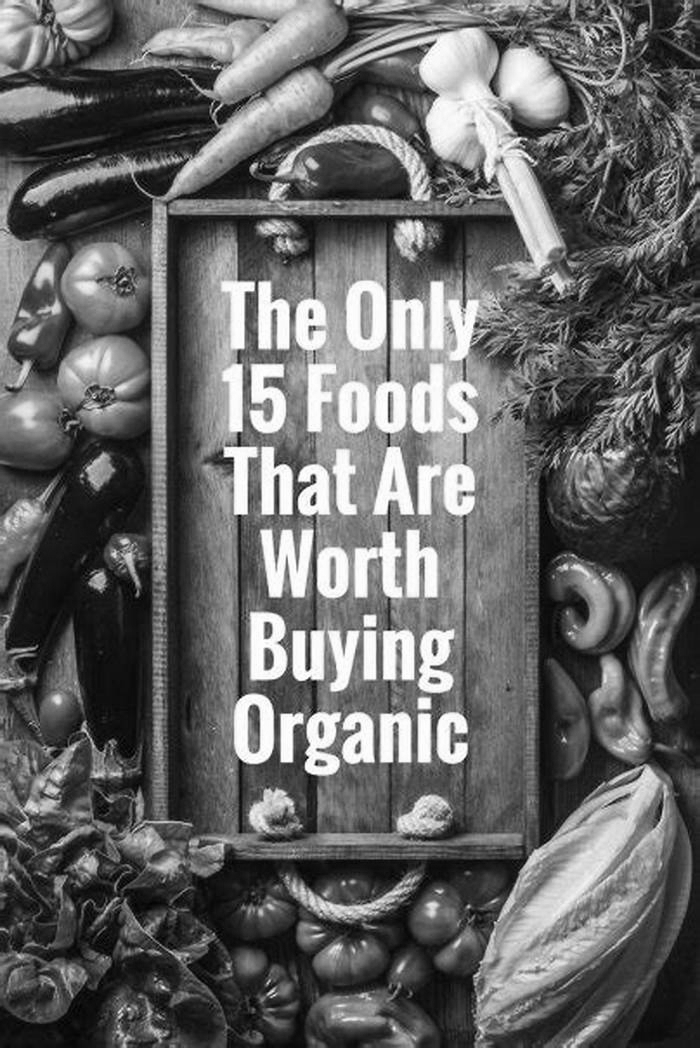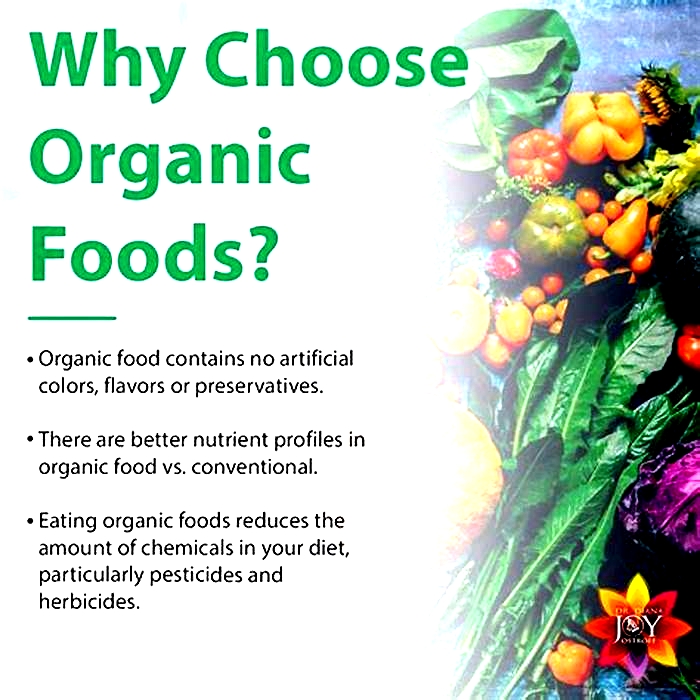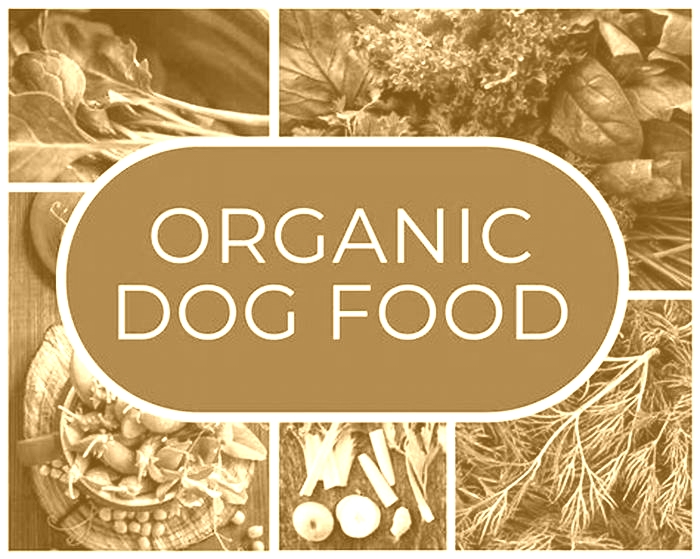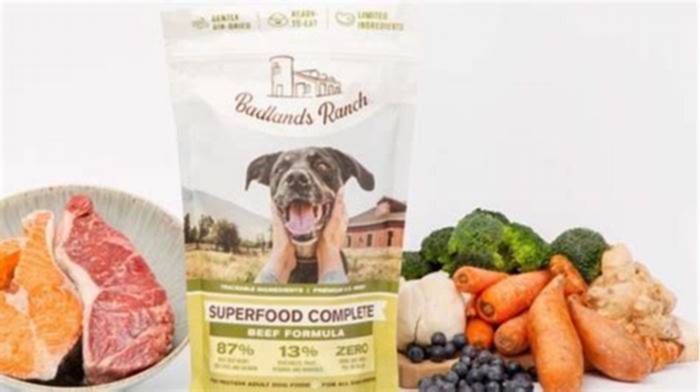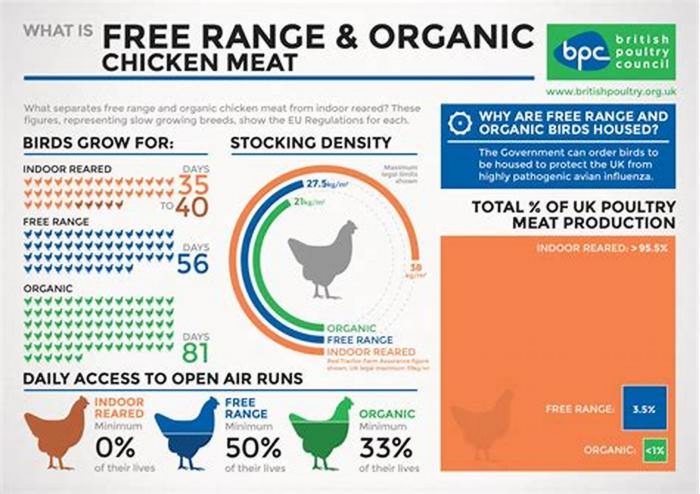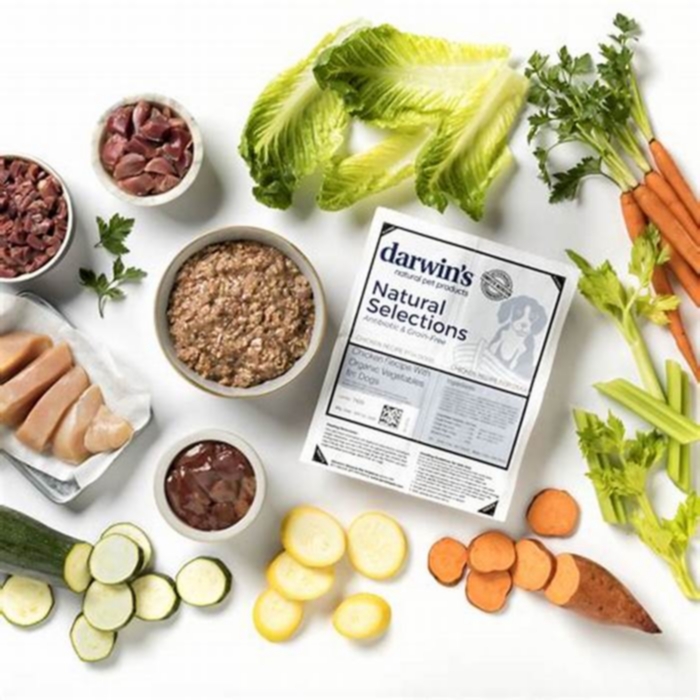Is chicken worth buying organic
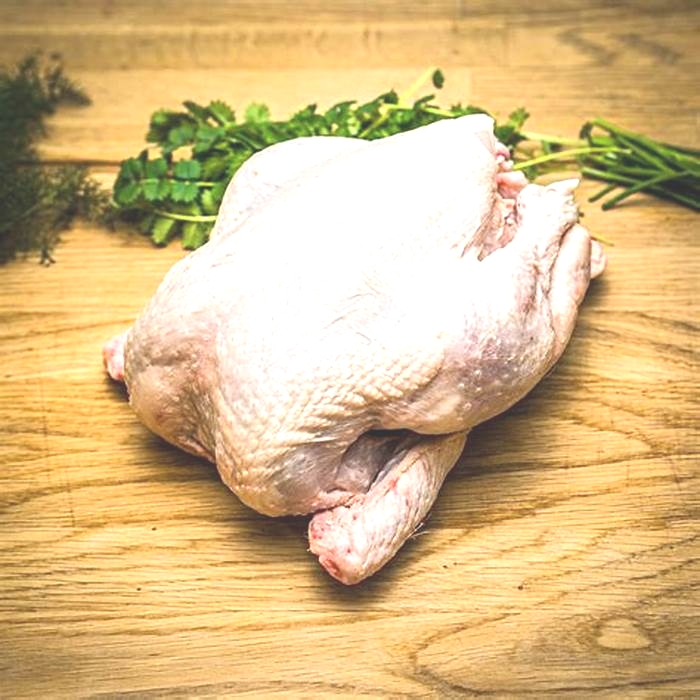
Have you been walking the grocery aisles and seeing organic this, organic that?Organic foods dont generally look that much different in comparison if at all, but theyre price sure seems to be. How can you be sure its worth the extra money to invest in what you think is good quality foods if theyre labeled as organic. Considering from country to country the regulations change when defining the term organic, it is important tomake sure to always buy locally and always buy from your own nationif you want the purest form of organic produce and meat.
There are different characteristics to look for when buying organic produce and buying organic animal products. For starters, buying organic produce means they are grown without the use of synthetic fertilizers, pesticides, genetically modified organisms (GMOs), and ionizing radiation. Whereas buying organic animal products means the animals do not take antibiotics or growth hormones. Buying organic animal products, according to USDA regulations also includes that the animals eat organic feed, must spend time outdoors and have enough space to live comfortably. But do you have to buy all fruits and veggies and meat organic? This is not always the case. Any fruits or veggies where you do not consume the peeling such as oranges, banana, avocado, pineapple etc. may not be crucial to buy organic because of the peeling acts as a protectant shield. Generally speaking, anything that you might have to wash before you eat is well worth buying organic.
1. Apples
When it comes to pesticides apples are known to be one of the highest contaminated crops. If there was ever a fruit that you wanted to make sure to buy organic, this is it. Apples become contaminated from the pesticide spraying operations. The pesticides then adhere to the skin of the apple and can even trickle into the core due to the factthat it has a concave shape. No amount of washing can help that! The best thing to do is make sure you look for locally sourced organic apples and stay clear of the pesticides.
2
2. Celery
Celery is a tricky crop to grow. It likes fertile soil and cool temperatures as well as needing constant moisture. Theyre considered an all year crop because they are grown in the summer in the north and are grown in winter in the south. Skip the risk of contaminatedfertilizers in the soil your celery is grown in and buy organic!
3
3. Cucumbers
Regular cucumbers are in the top 10 for having high pesticide usage. They also may have synthetic waxes on the skin (to preserve moisture) that contain a number of pesticides. It is best to buy organic for this reason. At the very least if organic is not accessible to you be sure to peel off the skin before you eat your cucumber.
4
4. Cherry Tomatoes/Tomatoes
Although organic tomatoes may look smaller in size they are actually filled with higher amounts of vitamin C. The reasons for this phenomenon is that regular tomatoes are treated with artificial fertilizers and pesticides whereas organic tomatoes are forced to guard themselves. The stress that organic tomatoes go through to help promote healthy-giving chemicals can help produce a better nutritional value of vitamin C.
5
5. Peaches
Peaches are high up on the list when it comes pesticides levels. It is recommended that it would be better for you to consume canned peaches than to eat non-organic peaches, woah!
6
6. Grapes
Farmers like to use pesticides on grapes because they are known to mold, attract insects and they can ripen quickly. The pesticides help subside all these negative features however it isnt great for your body to absorb all these chemicals. Over 50 pesticide residues were found on grapes in a recent study. It is best to find locally grown grapes.
7
7. Collard Greens
Although collard greens may be known to be a hardier vegetable they still showed high levels of pesticides. The same applies to Kale. Both of these are generally easy to find organic but if not opt for a safer alternative such as cabbage or broccoli.
8
8. Nectarines
Although nectarines are very similar to peaches they are still their own fruit. Like a peach in its shape and similar in taste a nectarine doesnt have any fuzzy textured skin. Nectarines are also considered a highly contaminated tree fruit. The higher levels tend to show more in imported nectarines so it is best to buy organic or at the very least always buy local if it is in season.
9
9. Potatoes
Grown in the ground potatoes are known to be North Americas favorite vegetable. This delicious vegetable can be prepared in a variety of ways such as mashed, baked, barbequed you name it there is a way to make them so that almost everyone willlove them. However, because they require nutrient soil they are often grown with artificial fertilizers and have been tested that the can contain a variety of pesticides and it is best to buy them organic. On the contrary sweet potatoes contain much lower levels of pesticides and are recommended if you do not have access to regular organic potatoes.
10
10. Spinach
Spinach is a great leafy green full of nutrition such as protein, fiber, a plethora of vitamins and so much more. The use of pesticides can quickly diminish its health benefits it has on your body. There were over 50 different pesticides found on spinach in a recent study. If you think frozen spinach might contain fewer pesticides, think again it was just as bad. Canned spinach showed decreased amounts but it still wasnt recommended. When in doubt, buy organic.
11
11. Snap Peas
Snap peas, as well as string beans, were both tested for high levels of pesticides. The pesticides are used to control insect attacks but the high levels of toxic chemicals may not be worth it. Try to always buy these organic.
12
12. Strawberries
Strawberries can be prone to fungus growth which encourages farmers to spray pesticides on them. Unfortunately, pesticide residue remains present when they get purchased at the grocery store or market. In a recent study, there were more than 40 different kinds of pesticides found on the strawberries. If you cant find organic strawberries its best to stay clear and try a different fruit like a pineapple.
13
13. Bell Peppers
These beautiful sweet bell peppers are produced in a variety of appealing colors but each year they continue to make the high levels of pesticide list. It is best to buy these organic!
14
14.Hot Peppers
Just like their relative, the bell pepper, it is best to buy these hot peppers organic as they have shown high levels of pesticides. Since it doesnt take much pepper to add spice to your dish, best to spend the tiny extra to get organic to bring up the heat in your favorite dishes!
15
15. Cherries
Like strawberries and other berries, cherries are high up on the list. Farmers like to use pesticides because they are prone to insect harm and to control bacteria growth. However, due to this fact, there are high levels of pesticides present on cherries. It may be in your best interest to buy these organic!
16
16. Chicken
Buying organic chicken is a good idea because they may contain less salt and other additives. Most regular chickens (even sometimes, natural chickens) are injected with salt, water, and preservatives to help boost their flavor and to add moisture. Which may make your next chicken dinner taste better but it may not be the healthiest choice. Since non-organic chicken is often injected with antibiotics, it may create drug-resistance strains of bacteria, which just isnt good for us. Organic chickens are allowed access outdoors and are not injected with antibiotics except to prevent pain and or death. If this is the case the chicken is no longer labeled organic and will not be sold. It can be better for you and our environment to buy organic chicken. but be sure to not mix upnaturalchicken andorganicchicken, as they have different meanings.
17
17. Eggs
Considering eggs are a by-product of chicken the same qualifications apply to eggs when making sure youre getting the best quality when buying organic eggs. Since backyard chicken coops are becoming more and more popular, you may even be able to buy some fresh eggs from a local!
18
18. Pork
Purchasing organic pork is a good idea because conventional pigs injected with vaccinations, hormones and pharmaceuticals. This is usedto help make the pigs grow faster and fattier, grow more meat in a shorter period of time. By consuming non-organic meat you are indirectly consuming these pharmaceuticals, which you most likely would not choose willingly. Secondly, buying organic pork can be better on our environment. Considering organic pork is not injected with chemicals and pharmaceuticals it can help dilute the pharmaceutical waste. Also, a lot of organic meat uses less packaging, and we all know the less plastic the better it will be for our earth.
19
19. Beef
For the same reasons as eating organic chicken and pork the same applies to beef. To prevent all the extra additives and chemicals it is beneficial to buy beef organic. Dont let the extra costs scare you, youre likely in for a high quality meal.
20
20. Milk
Buying organic milk means that your milk comes from cows that graze. This also includes that their diet is 30% grass-fed, the rest of the cows feed must be grown without any genetically modified seeds, chemical fertilizers, and pesticides. Whereas conventional cows are living in cramped environments being fed corn. Many health experts agree that organic milk is worth the extra money because it contains no antibiotics or growth hormones. As well as the organic production process is more sustainable and humane in comparison to some conventional dairy farming practices.
Salads aren't just for those on a diet anymore. Properly made, they can be a filling and delicious meal.
A new year is beginning and, like millions of other people around the world, you've probably vowed to make this year healthier and...
Start your day off right with a great breakfast. Breakfast is the most important meal of the day but it's easy to pick unhealthy...
Zucchini has quickly become a very popular vegetable (although, botanically, it is an immature fruit, according to Wikipedia).
Do you love mangos? You're definitely not alone. This fruit has become one of the most popular ingredients for many main dishes,...
Avocados have become one of the trendiest foods of the past few years.
Anytime youre invited to a potluck or hosting a dinner, you dont just go with the norm.
Spirulina is an up and comer on the healthy food trend charts, yet its one of the oldest and most nutritious foods in history.
Ah, avocados. Natures butter. They're much loved for theirsoft, creamy texture, blendability, good fats and oils, not to...
You go to the market and see these big beautiful greens and decide to buy some, with eyes bigger than your refrigerator.
Watermelon might just be the most refreshing summer fruit out there.
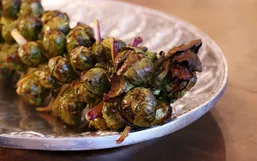

...
This is why we should be eating high-welfare organic chicken
Sign up to IndyEat's free newsletter for weekly recipes, foodie features and cookbook releases
Get our food and drink newsletter for free
Is there really any difference with organic chicken and non-organic chicken?
When we are having to read between the lines of so many conflicting labels on supermarket shelves, besides headlines about farming, it can be difficult to know if organic chicken really is any different and, crucially, if its worth the extra price. As today marks the start of Organic September, it feels like a good time to address the issue. For the record, the short answer is yes.
The longer answer is theres a huge gulf between intensively farmed and organic chickens; theres less of a difference between organic chicken and genuinely free range chickens that are also reared to very high-welfare standards.
While the issue is not black and white, comparing the best and the worst farming practices is the clearest way to reveal why.
Chicken connoisseurs
How many times do you eat chicken a week? Probably at least once, based on the fact that chicken is by far the most popular meat now eaten in the UK, with a staggering 900 million chickens consumed each year.
Technically, we should be a nation of chicken connoisseurs by now; comparing and talking about chicken in a similar way we do wine or steak.
We should be seeking that perfect combination of a firm texture, with a deep flavour reflective of the environment the chicken has been reared in. A combination that tells you the chicken has grown at a natural pace and has been fed a nutritionally rich diet that will nourish you and whoever youre feeding.
Yet, despite the huge quantities we consume or perhaps partly because of it our feelings towards poultry more closely resemble that of an indifferent partner than an appreciative lover.
We have let our standards slip and have come to accept sub-standard chicken as doing the job of filling a salad and filling a hole.
This has especially been the case since chicken, marketed as high in protein and low in fat, has become the go-to option for many diets and fitness regimes. This is despite the fact it is also pretty high in antibiotics, a fact thats widely regarded as a cause of the worrying resistance to the drugs in humans.
The most commonly consumed chicken in the UK is now the Ross variety, and yet most people have never even heard of it.
The Ross has been genetically bred to grow at a speed so unnatural it is the equivalent to a newborn baby weighing 28 stone by its third birthday, reports the RSPCA. This chicken is typically reared indoors and slaughtered at just 35 days old, by which time it can barely walk.
Organic farmers commonly opt for the Hubbard bird, which grows at a much more natural pace and has stronger legs, so it can roam free for its whole life. These birds can live for more than double the amount of time, which means there is more texture and depth of flavour to the meat.
Root Camp at Riverford Organic Farm, Devon
Show all 121/12Root Camp at Riverford Organic Farm, Devon
Root Camp at Riverford Organic Farm, Devon
Root Camp at Riverford Organic Farm, Devon
Root Camp at Riverford Organic Farm, Devon
Root Camp at Riverford Organic Farm, Devon
Root Camp at Riverford Organic Farm, Devon
Root Camp at Riverford Organic Farm, Devon
Root Camp at Riverford Organic Farm, Devon
Root Camp at Riverford Organic Farm, Devon
Charlotte Hodges
Root Camp at Riverford Organic Farm, Devon
Root Camp at Riverford Organic Farm, Devon
Root Camp at Riverford Organic Farm, Devon
Photography by Root Camp
Root Camp at Riverford Organic Farm, Devon
They are more expensive to purchase because they cost more to produce feed accounts for about 70 per cent of the cost to rear a chicken and these birds are eating for double the amount of time. Plus, the older they get the more they consume.
This is why we can buy a whole factory-farmed chicken from around 2 per kilogram, while an organic chicken costs about four times that.
I would implore people to eat less meat and buy better, says Daylesfords senior farm manager Richard Smith. Yes, theres a price difference, but everybody wins the animal, the farmer, the customer and the environment.
The best vs the worst: Daylesford, the chicken and the egg
Daylesford is a leader in the organic farm movement in the UK and, uniquely, it now owns the whole story of its chickens hatching its own eggs, rearing and slaughtering the mature birds.
We have total control over the whole production, it takes a lot of managing and care but the satisfaction is immense its a wonderful process to be involved with, says Smith.
Truly free-ranges places to buy:
Fosse MeadowsThis farm in Leicester makes a point of growing its birds to 81 days for an extra mature flavour.Sold throughFarmdrop; farmdrop.comSuttonHooSuffolks finest, there are no artificial lights in these chicken houses, which are mobile so new batches of chickens can always forage on fresh grass.Use SuttonHoos postcode checker for a butchers near you; suttonhoochicken.co.u
Pipers FarmYou can read all about how these properly free range chickens are reared and slaughtered on the website. Thats the level of transparency we should have for all meat.Delivered to your door; pipersfarm.com
The story of its chicken starts with a new, state-of-the-art hatchery, which cost more than half a million pounds to install two years ago and has been operational for the last 18 months.
Smith and his team have built up a parent flock of organic, free ranging birds to lay fertilised eggs, which are collected every day and transported to the hatchery where they are sterilised and then rotated for 21 days in a toasty incubator set to 37.5C to imitate the process of a broody hen.
Once hatched, the chicks are taken to cosy brooding barns. A few weeks later, when they are big enough, they spend their days in as idyllic a way as you would imagine any farm animal grazing the green grass, having dust baths, foraging for clover and insects, seeking shelter under a tree.
At night they are locked up and protected from foxes and other predators in their houses. There is a maximum of 625 per house, and as soon as day breaks the doors are opened for them to curiously explore once again.
But in an intensive system there are commonly 18,000-50,000 chickens per house and that number is growing. The chicks are typically owned and delivered ready-formed by the producer who also provides strict instructions on how they should be reared for maximum growth and collects them again for slaughter. So, the farmers in these systems have little control over how they are actually farming.
These include insisting they stay indoors, have a high amount of protein in their feed, and are kept in long hours of artificial light so they stay awake eating longer and grow fatter, quicker. They are often so tightly packed they have the equivalent of an A4 piece of paper to live on (and more space in the oven than they do the shed).
Farm manager at Daylesfords Wotton site, John Reid, who used to work in a more intensive system, says: My life used to be easier and I could blame the producer who provided the chicks if anything went wrong. Now Im responsible for everything. But clearly, he wouldnt have it any other way.
Slaughter isnt the nicest part of any story to tell, but its an important part. At Daylesford, the slaughter and butchery of its chickens is done on its new onsite abattoir, which was built last September at a cost of about 1.8m.
The difference between the welfare at Daylesfords operation, which has the maximum capacity of 10,000 chickens per week, compared with a huge processor that kills up to 10,000 an hour, is pretty significant.
The operators are multiskilled and work as a team; the most significant aspect is the care taken with each individual bird.
They have respect for the animals, says Smith. If they spot anything wrong with any of the animals that pass through, they instantly complain to me. They see huge importance in raising the issue.
A recent report by the Sustainable Food Trust highlights how small, local abattoirs are at a critical point and in danger of collapse. There are now only 63 left in England, down from 1,700 in the 1970s.
The report states: The main problem is the dominance of supermarkets, and mergers and acquisitions in the meat industry which allow large abattoirs to prosper at the expense of smaller ones.
The 2 Sisters slaughterhouse in Wales is one of the largest in the UK and the main abattoir supplying Tesco; its open 24 hours a day. Economically, smaller abattoirs just cant compete, but they are critical for local farming communities and animal welfare.
For animals, transportation to the abattoir can be the most stressful part of the process and this journey is now regularly hundreds of miles as opposed to just down the road.
When large numbers are the name of the game, there are also horror stories of chickens being grabbed three at a time and carelessly pushed into crates where their legs, wings or heads can get crushed. Compassion in World Farming reports that around 160 million UK chickens are being slaughtered without being properly stunned first each year, causing extreme pain, distress and suffering.
Is organic better?
Welfare issues aside, to be classed as organic in the UK, chickens have to be grown to at least 70 days to ensure they are growing at a pace more in line with how nature intended.
This means the chickens are actually healthier to eat, containing less saturated fat but higher omega-3 fatty acids, which are good for your heart.
Organic certifying body The Soil Association also reports that farm animals account for almost two-thirds of all antibiotics used in the EU and these are passed down to us through the food chain.
Organic birds are only given antibiotics if absolutely necessary, rather than routinely, as they are in lower welfare systems to prevent the spread of disease.
So, when it comes to buying the best chicken I would argue that organic chicken is undoubtedly better for our health, their welfare and from a quality of eating point of view. Food is one of lifes greatest pleasures, after all.
But, I would also always ask a butcher or a chef three questions before consuming a chicken: What bird is it? How old was it when it was killed? How many birds are there per house?
The answers you are looking for are Hubbard, 70 days and hundreds not thousands per house. Organic typically meets these standards; but the best free-range will, too.
What the standards really mean:
Organic Inside space: 10 birds per square metre (sq m) Outside space: one bird per 4sq m Birds are given good natural light and the most space to roam around indoors, and are encouraged from an early age to roam free range. Slower growing breeds are used, which means birds develop at a natural rate. They eat organic food and individual birds are only given antibiotics if absolutely necessary. Soil Association is generally considered the highest welfare organic certification.
Free range
Inside space: 10 birds per sq m Outside space: one bird per sq m Birds are given natural light and more space to roam around, and are also encouraged to roam free range.
RSPCA assured
Inside space: 15 birds per sqm Outside space: not always required Chickens can be free range (as above) or indoor bred, and this will be clearly labelled. The indoor-bred chickens have significantly better lives than intensively reared chickens with natural light and natural enrichment (perches, objects to peck at such as straw bales and vegetables).
Red tractor
Inside space: 19 birds per sqm Outside space: not required This is the most common food safety standard required by most retailers. Their animal welfare standards are in line with the minimum required by law, which arewidely considered to be insufficient. This means chickens are too tightly packed into barns, dont have to be given natural light, and can be bred to grow unnaturally fast.
Kosher and halal
When it comes to chicken welfare, these are mainly concerned with the slaughter method. Kosher forbids the use of stunning. Halal requires the animal to be alive at point of death, but it is often stunned first.
British/corn fed/fresh
Meaningless terms in relation to animal welfare.
Lizzie Rivera is the founder of lifestyle website BICBIM (bicbim.co.uk), which focuses on food ethics and sustainability

